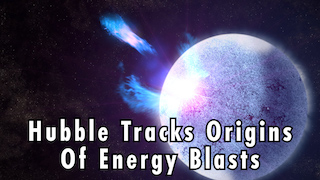Universe
ID: 13792
On April 15, 2020, a brief burst of high-energy light swept through the solar system, triggering instruments on several NASA and European missions. Now, multiple international science teams conclude that the blast came from a supermagnetized stellar remnant known as a magnetar located in a neighboring galaxy.
This finding confirms long-held suspicions that some gamma-ray bursts (GRBs) – cosmic eruptions detected somewhere in the sky almost daily – are in fact powerful flares from magnetars relatively close to home.
The April 15 event, cataloged as GRB 200415A, is a game changer because, for the first time, the burst's estimated location is almost entirely within the disk of one galaxy – NGC 253, located 11.4 million light-years away. This is the most precise position yet established for a giant flare located well beyond our galaxy.
GRBs, the most powerful explosions in the cosmos, can be detected across billions of light-years. Those lasting less than about two seconds, called short GRBs, occur when a pair of orbiting neutron stars both the crushed remnants of exploded stars spiral into each other and merge.
Magnetars are neutron stars with the strongest-known magnetic fields, with up to a thousand times the intensity of typical neutron stars and up to 10 trillion times the strength of a refrigerator magnet. Rarely, magnetars produce enormous eruptions called giant flares that produce gamma rays, the highest-energy form of light.
Shortly before 4:42 a.m. EDT on April 15, a powerful burst of X-rays and gamma rays triggered, in turn, instruments on NASA's Mars Odyssey mission, Wind satellite, and Fermi Gamma-ray Space Telescope. A ground-based analysis of data from NASA's Neil Gehrels Swift Observatory show that it also detected the event.
The pulse of radiation lasted just 140 milliseconds, as fast as a blink of the eye or a finger snap. Fermi's Large Area Telescope (LAT) also detected high-energy gamma rays up to several minutes after this pulse, a surprising finding.
Analysis of Fermi and Swift data indicate that the outburst launched a blob of electrons and positrons moving at about 99% the speed of light. The blob expanded as it traveled, following closely behind the light emitted by the giant flare.
After a few days, scientists say, they reached the boundary separating the magnetar's region of influence from interstellar space. The light passed through, followed many seconds later by the greatly expanded cloud. This material induced shock waves in gas piled up at the boundary, and the interaction produced the highest-energy emission detected by the LAT.
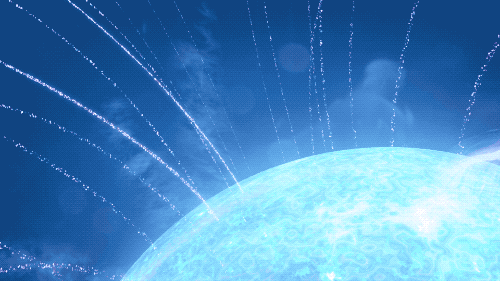
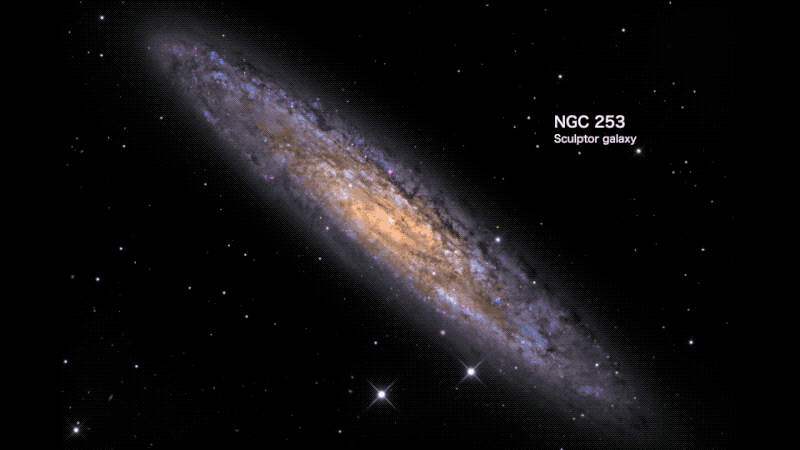

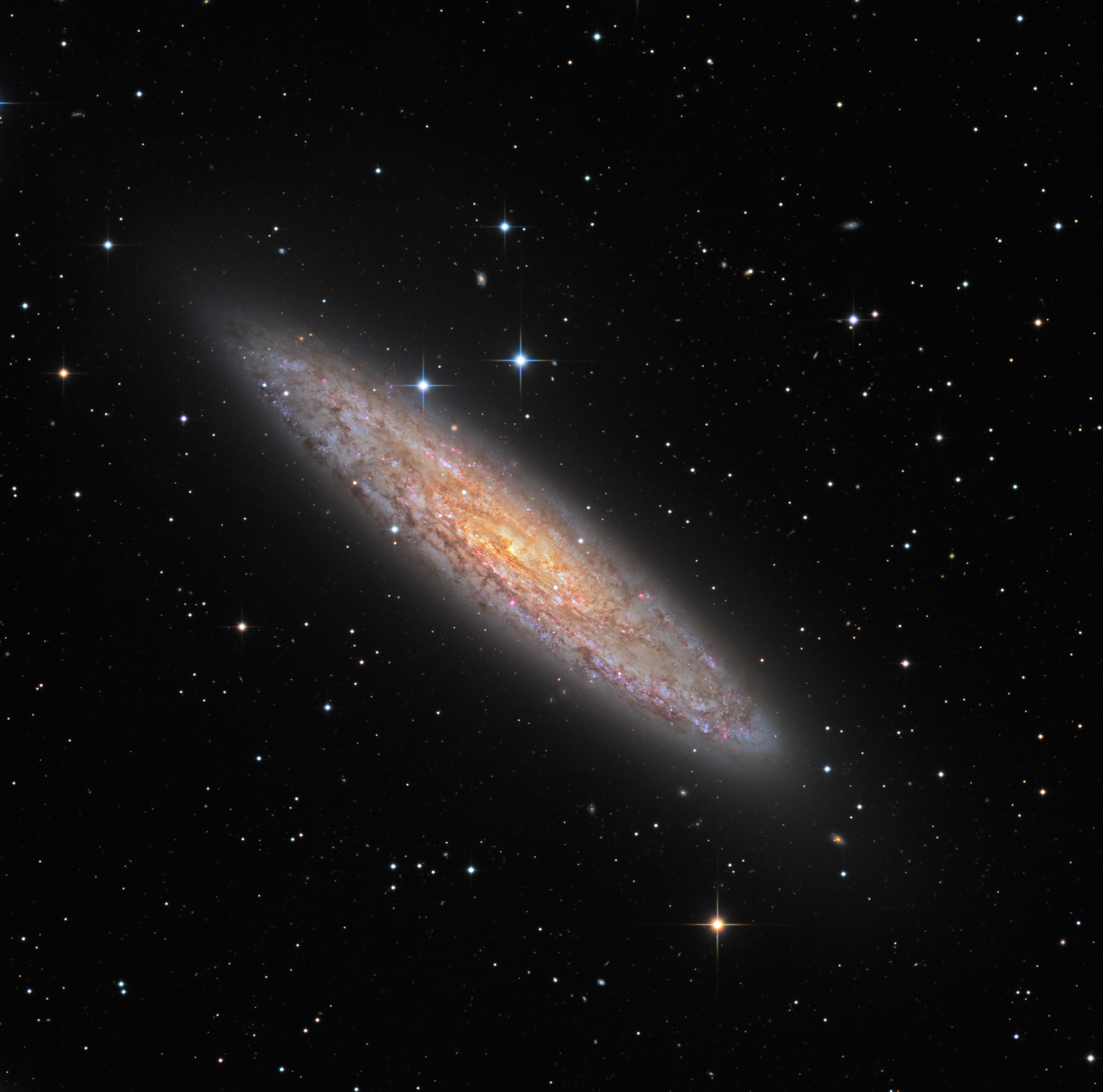
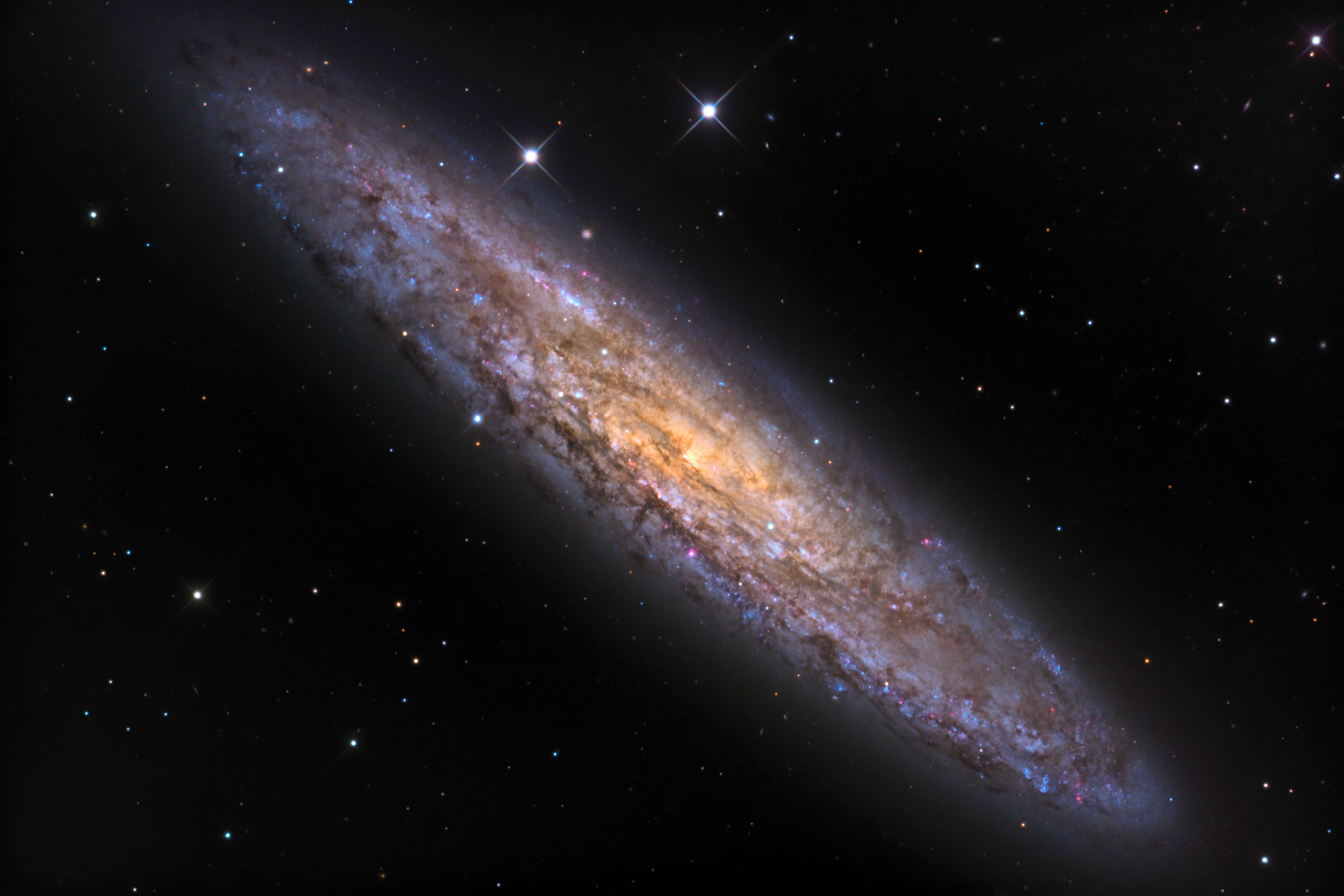
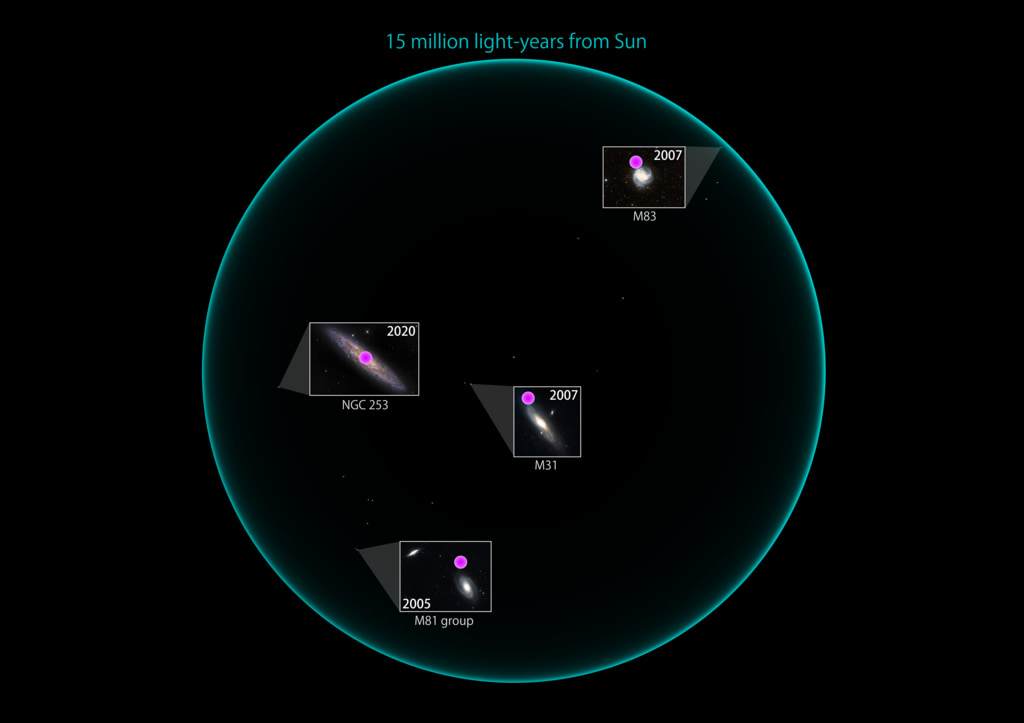
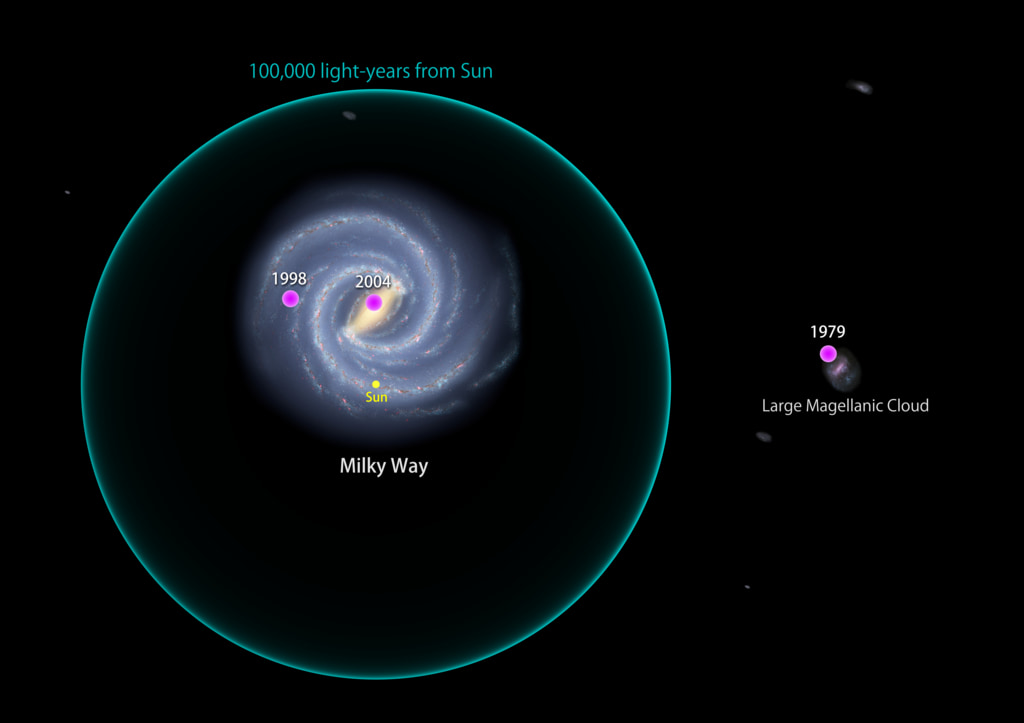
NASA Missions Unveil Magnetar Eruptions in Nearby Galaxies
This finding confirms long-held suspicions that some gamma-ray bursts (GRBs) – cosmic eruptions detected somewhere in the sky almost daily – are in fact powerful flares from magnetars relatively close to home.
The April 15 event, cataloged as GRB 200415A, is a game changer because, for the first time, the burst's estimated location is almost entirely within the disk of one galaxy – NGC 253, located 11.4 million light-years away. This is the most precise position yet established for a giant flare located well beyond our galaxy.
GRBs, the most powerful explosions in the cosmos, can be detected across billions of light-years. Those lasting less than about two seconds, called short GRBs, occur when a pair of orbiting neutron stars both the crushed remnants of exploded stars spiral into each other and merge.
Magnetars are neutron stars with the strongest-known magnetic fields, with up to a thousand times the intensity of typical neutron stars and up to 10 trillion times the strength of a refrigerator magnet. Rarely, magnetars produce enormous eruptions called giant flares that produce gamma rays, the highest-energy form of light.
Shortly before 4:42 a.m. EDT on April 15, a powerful burst of X-rays and gamma rays triggered, in turn, instruments on NASA's Mars Odyssey mission, Wind satellite, and Fermi Gamma-ray Space Telescope. A ground-based analysis of data from NASA's Neil Gehrels Swift Observatory show that it also detected the event.
The pulse of radiation lasted just 140 milliseconds, as fast as a blink of the eye or a finger snap. Fermi's Large Area Telescope (LAT) also detected high-energy gamma rays up to several minutes after this pulse, a surprising finding.
Analysis of Fermi and Swift data indicate that the outburst launched a blob of electrons and positrons moving at about 99% the speed of light. The blob expanded as it traveled, following closely behind the light emitted by the giant flare.
After a few days, scientists say, they reached the boundary separating the magnetar's region of influence from interstellar space. The light passed through, followed many seconds later by the greatly expanded cloud. This material induced shock waves in gas piled up at the boundary, and the interaction produced the highest-energy emission detected by the LAT.







Related
For More Information
Credits
Scott Wiessinger (USRA): Lead Producer
Francis Reddy (University of Maryland College Park): Lead Science Writer
Chris Smith (USRA): Animator
Scott Wiessinger (USRA): Animator
Scott Wiessinger (USRA): Narrator
Scott Wiessinger (USRA): Editor
Francis Reddy (University of Maryland College Park): Lead Science Writer
Chris Smith (USRA): Animator
Scott Wiessinger (USRA): Animator
Scott Wiessinger (USRA): Narrator
Scott Wiessinger (USRA): Editor
Please give credit for this item to:
NASA's Goddard Space Flight Center. However, individual items should be credited as indicated above.
NASA's Goddard Space Flight Center. However, individual items should be credited as indicated above.
Science Paper:
https://www.nature.com/articles/s41586-020-03076-9
https://www.nature.com/articles/s41586-020-03077-8
https://www.nature.com/s41550-020-01287-8
Short URL to share this page:
https://svs.gsfc.nasa.gov/13792
Missions:
Fermi Gamma-ray Space Telescope
Swift
Wind
This item is part of these series:
Narrated Movies
Astrophysics Visualizations
Astrophysics Animations
Astrophysics Features
Keywords:
SVS >> Galaxy
SVS >> HDTV
SVS >> Music
SVS >> Neutron Star
SVS >> X-ray
SVS >> Astrophysics
SVS >> Edited Feature
SVS >> Swift
SVS >> Fermi
SVS >> Magnetar
NASA Science >> Universe
SVS >> Mars Odyssey
SVS >> Gamma Ray
https://www.nature.com/articles/s41586-020-03076-9
https://www.nature.com/articles/s41586-020-03077-8
https://www.nature.com/s41550-020-01287-8
Short URL to share this page:
https://svs.gsfc.nasa.gov/13792
Missions:
Fermi Gamma-ray Space Telescope
Swift
Wind
This item is part of these series:
Narrated Movies
Astrophysics Visualizations
Astrophysics Animations
Astrophysics Features
Keywords:
SVS >> Galaxy
SVS >> HDTV
SVS >> Music
SVS >> Neutron Star
SVS >> X-ray
SVS >> Astrophysics
SVS >> Edited Feature
SVS >> Swift
SVS >> Fermi
SVS >> Magnetar
NASA Science >> Universe
SVS >> Mars Odyssey
SVS >> Gamma Ray
